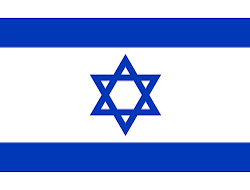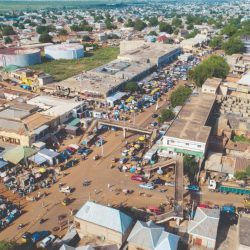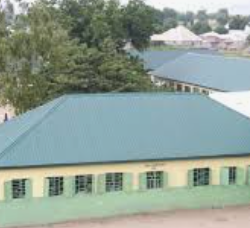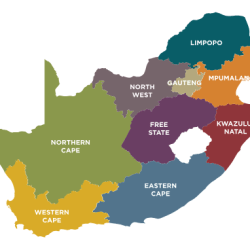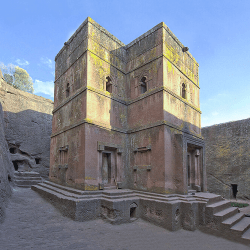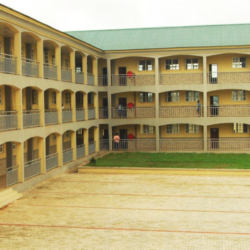Discover essential details about the location of Egypt including its borders, coordinates, natural features, and strategic importance on the world map
The Arab Republic of Egypt is located in the north-eastern corner of Africa and south-western Asia. It is bounded on the north by the Mediterranean Sea, on the east by Palestine and Israel, on the south by Sudan, and on the west by Libya.
The country is about 1. 085 km from north to south and about 1. 255 km from east to west. It has a total area of 1. 001450 km2.
Location
Northern Africa, bordering the Mediterranean Sea, between Libya and the Gaza Strip, and the Red Sea north of Sudan, and includes the Asian Sinai Peninsula
Geographic coordinates: 27 00 N, 30 00 E
Map references: Africa
Area: Total: 1,001, 450 sq km
Land: 995, 450 sq km
Water: 6, 000 sq km
Area-comparatives:
slightly more than three times the size of New Mexico
Land boundaries:
Total: 2, 665 km
Border countries: Israel 277 km, Libya 1,115 km, Sudan 1, 273 km.
Coastline: 2, 450 km
Maritime claims:
– Territorial sea: 12 nm
-Contiguous zone: 24 nm
-Exclusive economic zone: 200 nm
-Continental shelf: 200-m depth or to the depth of exploitation
Elevation extremes:
-lowest point : Qattara Depression 436 m
-highest point: Mount Catherine 2, 629 m
-Natural resources: petroleum, natural gas, iron ore, phosphates, manganese, limestone, gypsum, talc, asbestos, lead and zinc.
Land use:
-Arable land: 2.87%
-Permanent crops: 0.48%
-Other: 96.65% (2001)
Irrigated land: 33, 000 sq km (1998 est.)
Egypt’s Geographical Setting
Egypt, the land of ancient pyramids and a cradle of early civilization, is not just a country of historical wonders—it is also uniquely positioned on the globe. The location of Egypt offers both geographic diversity and geopolitical significance, making it a standout nation in both Africa and the Middle East.
Spanning across northeastern Africa and southwest Asia, Egypt acts as a bridge between two continents, giving it a special role in regional and global affairs. From deserts and oases to coastlines and river deltas, Egypt’s geography is as captivating as its history.
Continental Placement of Egypt
Egypt in Africa and Asia
Egypt is one of the few countries that straddles two continents. Most of its landmass lies in North Africa, while the Sinai Peninsula—which comprises a smaller portion—rests in Southwest Asia. This dual-continental presence enhances its strategic and cultural importance.
Importance of the Sinai Peninsula
The Sinai Peninsula not only connects Egypt to Asia, but also houses religiously and historically significant sites like Mount Sinai. It’s bordered by the Gulf of Aqaba and the Gulf of Suez, providing maritime access to the Red Sea.
Egypt’s Borders and Neighboring Countries
Bordering Nations and Territories
Egypt shares land borders with:
- Libya to the west (1,115 km)
- Sudan to the south (1,273 km)
- Gaza Strip (11 km) and Palestine (266 km) to the northeast
Its proximity to Israel and the Middle East increases its geopolitical weight.
Egypt’s Strategic Location Between Continents

The intersection of Africa, Asia, and Europe makes Egypt a vital regional hub. Its control of the Suez Canal, a major international waterway, further enhances its importance in global trade.
Latitude and Longitude Coordinates of Egypt
Geographic Coordinates Explained
The geographic coordinates of Egypt are 27°00′N latitude and 30°00′E longitude, placing it firmly within the Northern Hemisphere and close to the Tropic of Cancer. This contributes to Egypt’s desert climate and warm temperatures.
Impact on Time Zones and Climate
Egypt is in the Eastern European Time Zone (UTC+2). Its coordinates also contribute to arid weather patterns, with minimal rainfall and plenty of sunshine throughout the year.
The Map of Egypt: An Overview

Understanding Egypt’s Shape and Size
Egypt covers an area of 1,001,450 square kilometers, making it slightly more than three times the size of New Mexico in the USA. The country stretches approximately 1,085 km from north to south and 1,255 km from east to west.
Egypt’s Location on a World Map
Located at the crossroads of three continents, Egypt’s position gives it access to the Mediterranean Sea in the north and the Red Sea in the east, offering multiple maritime routes.
Land Area and Surface Features
Total Land and Water Area
- Total Area: 1,001,450 sq km
- Land: 995,450 sq km
- Water: 6,000 sq km
Egypt’s landscape is primarily desert, but it also features river valleys, deltas, mountains, and oases.
Elevation Extremes: From Qattara to Mount Catherine
- Lowest Point: Qattara Depression (−436 ft below sea level)
- Highest Point: Mount Catherine (8,668 ft above sea level)
These extremes add to the country’s diverse topography.
Coastlines and Maritime Claims
Egypt’s Coastal Boundaries
Egypt boasts an extensive coastline of approximately 2,450 km, bordered by the Mediterranean Sea to the north and the Red Sea to the east. This access to vital waterways enhances Egypt’s influence in regional maritime trade.
Territorial Sea and Exclusive Economic Zones
Egypt exercises various maritime claims:
- Territorial Sea: 12 nautical miles (nm)
- Contiguous Zone: 24 nm
- Exclusive Economic Zone (EEZ): 200 nm
- Continental Shelf: Extends to 200-meter depth or depth of exploitation
These zones allow Egypt to control fishing, drilling, and navigation rights.
Egypt’s Natural Resources and Land Use
Key Mineral Resources
Egypt is rich in natural resources, contributing significantly to its economy. These include:
- Petroleum & Natural Gas
- Iron Ore, Phosphates, and Manganese
- Limestone, Gypsum, Talc, Asbestos
- Lead and Zinc
The presence of these minerals supports industrial development and exports.
Agriculture, Arable Land, and Irrigation
Despite its largely desert terrain:
- Arable Land: 2.87%
- Permanent Crops: 0.48%
- Other Uses: 96.65%
Approximately 33,000 sq km of land is irrigated (as of 1998), primarily using water from the Nile River to grow crops like wheat, cotton, and sugarcane.
The Nile River’s Role in Egypt’s Geography
Nile Delta Characteristics
The Nile Delta is the only delta in Egypt. It stretches:
- 100 miles long
- 155 miles wide
- Triangular in shape, resembling the Greek letter “delta” (Δ)
It is one of the most fertile regions in Egypt, supporting dense populations and agricultural productivity.
Importance for Civilization and Economy
The Nile River has historically been Egypt’s lifeline. From ancient times to the present, it has:
- Supported agriculture through annual flooding
- Served as a transportation route
- Enabled the growth of cities like Cairo and Luxor
Egypt’s Major Cities and Landmarks
Cairo, Giza, and Alexandria
- Cairo: The capital and largest city
- Giza: Home to the iconic pyramids and the Sphinx
- Alexandria: A Mediterranean port with ancient libraries and fortresses
Historical Cities: Memphis and Thebes
These cities were pivotal in ancient Egyptian civilization, featuring temples, tombs, and artifacts.
Notable Features: Suez Canal, Abu Simbel
- Suez Canal: Connects the Mediterranean to the Red Sea; a key global shipping route
- Abu Simbel: Monumental temples carved into rock by Pharaoh Ramses II
Desert Landscapes and Oases
The Libyan Desert
The vast western desert is part of the Sahara and includes rocky plateaus, sand dunes, and ancient trade routes.
The Five Major Oases of Egypt
All located in the Libyan Desert, these include:
- Farafrah
- Bahariya
- Dakhla
- Kharga (Kharijah)
- Siwa
These oases are vital for habitation and agriculture in the desert.
Flora and Vegetation in Egypt
Absence of Forests
Egypt has no natural forests. The harsh desert climate limits dense vegetation.
Unique Plants Like Papyrus and Date Palms
- Papyrus: Grows near the Nile; once used to make paper
- Date Palms & Citrus Groves: Cultivated in irrigated regions and oases
Unique Geographical Facts
Egypt Below Sea Level
Certain parts of Egypt, especially the Qattara Depression, lie below sea level. This contributes to its unique climatic zones and hydrological patterns.
Triangular Shape of the Nile Delta
The Nile Delta’s distinctive triangle shape is visible from space and has been a cornerstone of Egypt’s settlement patterns and agricultural legacy.
Egypt’s Strategic Geopolitical Importance
Global Trade and the Suez Canal
The Suez Canal is one of the most crucial maritime chokepoints in the world. It:
- Facilitates 12% of global trade
- Connects Europe and Asia without navigating around Africa
Military and Diplomatic Relevance
Egypt’s geographic position enables:
- Strategic military presence
- Participation in African, Arab, and Mediterranean diplomacy
Comparisons with Other Countries
Size Comparison with U.S. States
With a total area of 386,662 square miles, Egypt is:
- Slightly more than three times the size of New Mexico
- Larger than Texas, but smaller than Alaska
Climatic and Geographic Similarities
Egypt’s deserts and river valleys resemble those of:
- Sudan and Libya
- Parts of the Middle East, like Jordan
Future Developments and Geographic Changes
Urban Expansion
As Egypt’s population grows, cities expand into the desert. The government is:
- Developing new administrative capitals
- Expanding infrastructure and housing projects
Environmental Challenges and Land Use
Challenges include:
- Desertification
- Water scarcity
- Urban sprawl
Efforts are underway to protect arable land and improve irrigation efficiency.
Frequently Asked Questions (FAQs)
1. Where exactly is Egypt located?
Egypt is located in northeastern Africa and also includes the Sinai Peninsula in Asia, making it a transcontinental country.
2. What seas and countries border Egypt?
Egypt is bordered by:
- Mediterranean Sea (north)
- Red Sea (east)
- Libya (west), Sudan (south), Israel, and the Gaza Strip (northeast)
3. What is the capital of Egypt and where is it located?
Cairo is the capital of Egypt, situated in the northeastern part of the country, near the Nile River.
4. What are Egypt’s highest and lowest geographical points?
- Highest: Mount Catherine (2,629 m / 8,668 ft)
- Lowest: Qattara Depression (−133 m / −436 ft)
5. What natural resources are found in Egypt?
Key resources include petroleum, natural gas, phosphates, iron ore, limestone, and gypsum.
6. Why is Egypt’s location strategically important?
Due to the Suez Canal, Egypt is a major player in international maritime trade, linking Europe and Asia via the Red Sea and Mediterranean.
Why Egypt’s Location Matters
The location of Egypt is more than a point on a map—it’s a blend of continents, cultures, and commerce. Whether it’s connecting hemispheres through the Suez Canal or supporting millions via the Nile River, Egypt’s geographic positioning defines its past, present, and future.
From its mountainous peaks to its fertile deltas, from ancient oases to bustling cities, Egypt continues to prove why its location is one of the most fascinating and important in the world.

